The conventional narrative about American climate action paints a simple picture: blue states lead on renewables while red states are all about oil and gas. But comprehensive data from 2019-2024 reveals a far more complex and ironic reality when it comes to Texas. While Texas politicians rail against ESG investing and environmental regulations, the Lone Star State has quietly become America's renewable energy powerhouse, often outpacing California in practical climate solutions.
This paradox illuminates why I think we need a new American narrative on climate change. We need to move beyond “The World Is Ending” narrative of the strident climate activists and the “What Me Worry?” narrative of the obdurate climate change deniers. We need one that recognizes that climate change is a serious challenge but also one that creates great opportunities to make American more prosperous and secure. As I explain in my forthcoming book "An American's Guide to Climate Change: How America Can Lead and Prosper" (January 2026), effective climate action emerges not from partisan environmental rhetoric, but from pragmatic responses to economic opportunity, energy security, and technological innovation—exactly the values that resonate across America's political spectrum
The Renewable Energy Revolution: Texas Takes the Lead
The numbers tell a remarkable story. Between 2019 and 2024, Texas added a staggering 26,926 MW of utility-scale solar capacity—a compound annual growth rate of 52.9%. This explosive growth dwarfs California's more modest 10.9% solar expansion with more comprehensive climate policies but admittedly on a much larger starting base.
Even more striking, Texas now generates 34.6% of its electricity from renewable sources, up from just 20% in 2019. This 14.6 percentage point increase nearly matches California's gain of 15.3 percentage points, achieved despite California's decades-long head start and aggressive renewable mandates. It is economics, not policy mandates, that is driving renewable energy growth in Texas.
The crown jewel of Texas's renewable revolution lies in battery storage. The state's utility-scale battery capacity exploded from a mere 94 MW in 2019 to 6,200 MW in 2024—a stunning 131.1% compound annual growth rate. California, while maintaining a larger absolute capacity at 15,500 MW, achieved "only" an 82.2% growth rate from its higher starting point.
Perhaps most tellingly, and again ironically, Texas added 13,990 MW of wind capacity during this period, building on its already substantial base of 28,108 MW. The state now hosts over 42,000 MW of wind generation, nearly seven times California's wind capacity of 6,400 MW.
The takeaway: Texas achieved faster renewable deployment than California through market-driven competition rather than regulatory mandates, demonstrating that economic incentives can accelerate clean energy adoption even in red states.
Innovation Ecosystems: Closing the Gap
Texas's climate tech innovation ecosystem, while smaller than California's, shows impressive momentum. Climate tech venture capital and private equity investment in Texas grew at 15.3% annually, reaching $5.1 billion by 2024. This actually exceeds California's 11.6% growth rate, though California maintains a much larger absolute investment level of $14.7 billion.
The number of notable climate tech companies (those raising at least $50 million or with public operations) in Texas grew from 14 to 19, while California expanded from 39 to 56. Texas universities increased climate and energy research funding by 5.4% annually to $979 million, compared to California's 4.4% growth to $2.6 billion.
These metrics reveal Texas developing a competitive innovation cluster around practical energy technologies (e.g., carbon capture and storage, enhanced oil recovery, grid modernization, and energy storage) that align with the state's existing industrial base while advancing climate goals.
Both are important: While California maintains larger absolute investment levels, Texas's faster growth rates in climate tech funding suggest that market-friendly policies can rapidly accelerate innovation ecosystems even in traditionally conservative states. California's mature venture ecosystem continues to lead in total funding and breakthrough technologies, while Texas builds momentum in practical energy applications. Both are needed and this illustrates the strength of our diverse economy.
The Regulatory Paradox: Pragmatic Progress Amid Political Theater
Here's where the Texas climate paradox becomes most apparent. While California enacted nine pro-climate regulations with zero anti-climate actions during 2019-2024, Texas's regulatory landscape tells a more complex story—five pro-climate actions alongside three anti-climate measures.
Texas's most significant pro-climate measure, Senate Bill 3 (2021), mandated comprehensive grid winterization following the devastating 2021 winter storm Uri. House Bill 1284 (2021) positioned Texas as a carbon capture leader by granting the Railroad Commission jurisdiction over CO₂ injection wells. The state also launched competitive EV charging grants and updated building energy codes.
Simultaneously, Senate Bills 13 and 19 (2021) created "blacklists" excluding financial institutions that "boycott" fossil fuel industries from state business, while maintaining permissive gas flaring regulations. Attorney General Ken Paxton has launched aggressive enforcement, filing antitrust lawsuits against BlackRock, State Street, and Vanguard for allegedly manipulating coal markets. I am deeply familiar with all of these red state and Congressional Republican antics and have written about them extensively.
For the most part I find all of this ridiculous political theater at best and self-harming to red state citizens at worst. For a good analysis of anti-ESG policies see “ESG: Politics Over Policy and Unintended Consequences” written by my good friend Tim Doyle (R), co-founder with me of the Responsible Business Initiative, for the center-right nonprofit Centerline Liberties. My most recent piece on the ESG Culture Wars, “Here We Go Again: Red States Continue to Focus on ESG,” was written another good friend Dan Crowley (R). Interestingly enough, no state official from Texas signed this letter. Maybe they are beginning to see the contradiction between meaningless anti-ESG gestures and great solid climate (whether they want to call it this or not and I really don’t care) action on the ground.
Despite hostile political rhetoric, climate organizations thrive across Texas. The American Conservation Coalition has identified Texas as fertile ground for conservative climate action, while Citizens for Responsible Energy Solutions and Citizens' Climate Lobby maintain active operations alongside traditional environmental groups.
California's comprehensive approach produced landmark achievements: SB 100's requirement for 100% zero-carbon electricity by 2045, Advanced Clean Cars II mandating 100% zero-emission vehicles by 2035, and pioneering climate disclosure laws requiring large companies to report emissions and climate risks. The state's regulatory integration across sectors, from building codes to fuel standards, represents the most comprehensive subnational climate policy framework in America.
What this shows: Both states embrace climate solutions while pursuing fundamentally different pathways—California through comprehensive regulation, Texas through market incentives and practical adaptation. California's systematic policy integration contrasts sharply with Texas's market-driven approach, yet both have generated substantial clean energy progress.
Infrastructure Reality Check: Reliability Challenges and Investment Responses
Climate action in both states is being driven by some sobering truths about both states' infrastructure challenges. Texas faces significant reliability issues, with average power outages (System Average Interruption Duration Index or SAIDI) of 273 minutes compared to California's 103 minutes. The state's building codes score just 39 out of 100 on resilience measures, far below California's 93.
Yet Texas is responding with substantial investments. The state attracted $1.265 billion in grid reliability and resilience funding from 2019-2024, nearly matching California's $1.33 billion despite having no comprehensive climate policies. Virtually all of the California money comes from the Federal government through DOE Grid Resilience grants ($600 million), DOE 40101(d) ($67.5 million), and FEMA Building Resilient Infrastructure and Communities (BRIC) award ($662.5 billion). But 81% of the Texas money is from the Federal government as well.: DOE 40101(d) grants worth $493 million and FEMA BRIC awards worth $592 million. The rest ($240 million) is coming from Public Utility Commission of Texas (PUCT) grid hardening programs. So even very market-oriented Texas demonstrates the important role of government funding.
The disaster data is particularly telling. Texas experienced 68 billion-dollar disasters during 2020-2024, nearly three times California's 24 events. Severe weather dominates Texas's disaster profile with 42 events, compared to California's wildfire-heavy pattern of just seven wildfire events among its disasters.
These infrastructure challenges drive practical climate solutions. The Electric Reliability Council of Texas (ERCOT) added 6,000 miles of transmission lines during this period, and the state's focus on grid modernization, battery storage, and distributed generation reflects lessons learned from extreme weather events rather than abstract environmental goals.
The lesson: Despite significant infrastructure vulnerabilities, both states attracted over $1.2 billion in resilience investments, demonstrating bipartisan recognition that climate adaptation requires substantial public investment regardless of political rhetoric about climate causes.
Economic Foundations: The Texas Growth Machine
Understanding Texas's climate paradox requires examining the underlying economic fundamentals that make clean energy investments attractive regardless of political rhetoric. Texas's economy grew at a remarkable 7.4% annual rate during 2019-2024, compared to California's more modest 1.9%. The state added 2.3 million residents, some 450,000-500,000 who came from California, where population was virtually static with a loss of about 79,000 residents.
Median household income in Texas grew by $7,434 over five years, compared to California's anemic $1,335 increase. Texas maintained significantly lower electricity costs—13.9 cents per kWh versus California's 27.5 cents—while keeping unemployment lower despite the economic disruptions of this period.
These economic advantages create fertile ground for energy investment. Low electricity costs make Texas attractive for energy-intensive industries while providing room for renewable energy to compete on pure economic merit. Strong population and economic growth drive electricity demand, creating market opportunities for new generation capacity.
Crucially, Texas accomplished this economic performance while building renewable energy capacity faster than California. This demonstrates that climate action and economic growth can be mutually reinforcing when approached through market-friendly policies rather than strictly regulatory mandates.
Key insight: Texas's superior economic fundamentals created conditions where renewable energy could compete on pure economic merit, while California's higher costs may have slowed deployment despite stronger environmental policies. Both approaches generated significant clean energy progress, suggesting multiple pathways to climate goals.
The Conservative Climate Playbook in Action
Texas's approach exemplifies what might be called "conservative climate solutions" that advance decarbonization through economic opportunity, technological innovation, and energy security rather than environmental regulation. This playbook includes several key elements:
Market-driven deployment: Rather than renewable energy mandates, Texas relies on competitive electricity markets that allow cheap renewables to outcompete fossil fuels on price. The state's deregulated electricity market creates natural incentives for clean energy investment without government picking winners and losers.
Technology focus: Texas embraces emerging technologies like carbon capture and storage, enhanced oil recovery, and advanced battery systems that align with existing industrial capabilities. The state's approach emphasizes technological solutions over lifestyle changes or consumption restrictions.
Energy security framing: Climate solutions are presented as enhancing energy independence and grid reliability rather than environmental protection. Grid modernization and renewable energy become matters of economic competitiveness and national security.
Practical resilience: Following the 2021 winter storm Uri, Texas pursued grid hardening and weatherization as practical responses to demonstrated vulnerabilities. Climate adaptation becomes a matter of infrastructure investment rather than environmental ideology.
What this reveals: The conservative climate playbook succeeds by aligning climate solutions with traditional American values of economic opportunity, energy independence, and practical problem-solving rather than challenging those values directly.
The Path Forward
The Texas climate paradox reveals that America's path to decarbonization may be more politically feasible than conventional wisdom suggests. Rather than requiring wholesale political transformation, effective climate action can emerge from conservative values applied to practical energy challenge. At the same time, California demonstrates the power of comprehensive regulatory coordination.
Three crucial insights emerge from this comparative state analysis. First, competitive markets can drive clean energy deployment faster than regulatory mandates when economic conditions align properly. Texas added renewable capacity at breakneck speed despite its conservative politics, because deregulated electricity markets allowed cheap renewables to outcompete fossil fuels on pure economics. Second, climate resilience investments attract bipartisan support when framed around protecting infrastructure and communities rather than abstract environmental goals. Both states accessed over $1.0 billion in federal resilience funding. Third, innovation ecosystems benefit from diverse political environments, with California's regulatory approach driving certain breakthroughs while Texas's market focus encourages different technological solutions.
This doesn't diminish California's comprehensive climate policies or suggest markets alone will solve climate change. Rather, it reveals that multiple pathways to decarbonization can coexist and compete productively within America's federalist system. For the "exhausted middle"—the 72% of Americans who believe global warming is happening but reject partisan approaches—this offers hope for climate action that strengthens rather than constrains prosperity.
The data are clear. Effective climate solutions emerge when aligned with local values and economic conditions rather than imposed through uniform national approaches. If California shows what regulation can achieve, Texas proves what markets can deliver. Together, they sketch a more hopeful American climate future than either could alone.


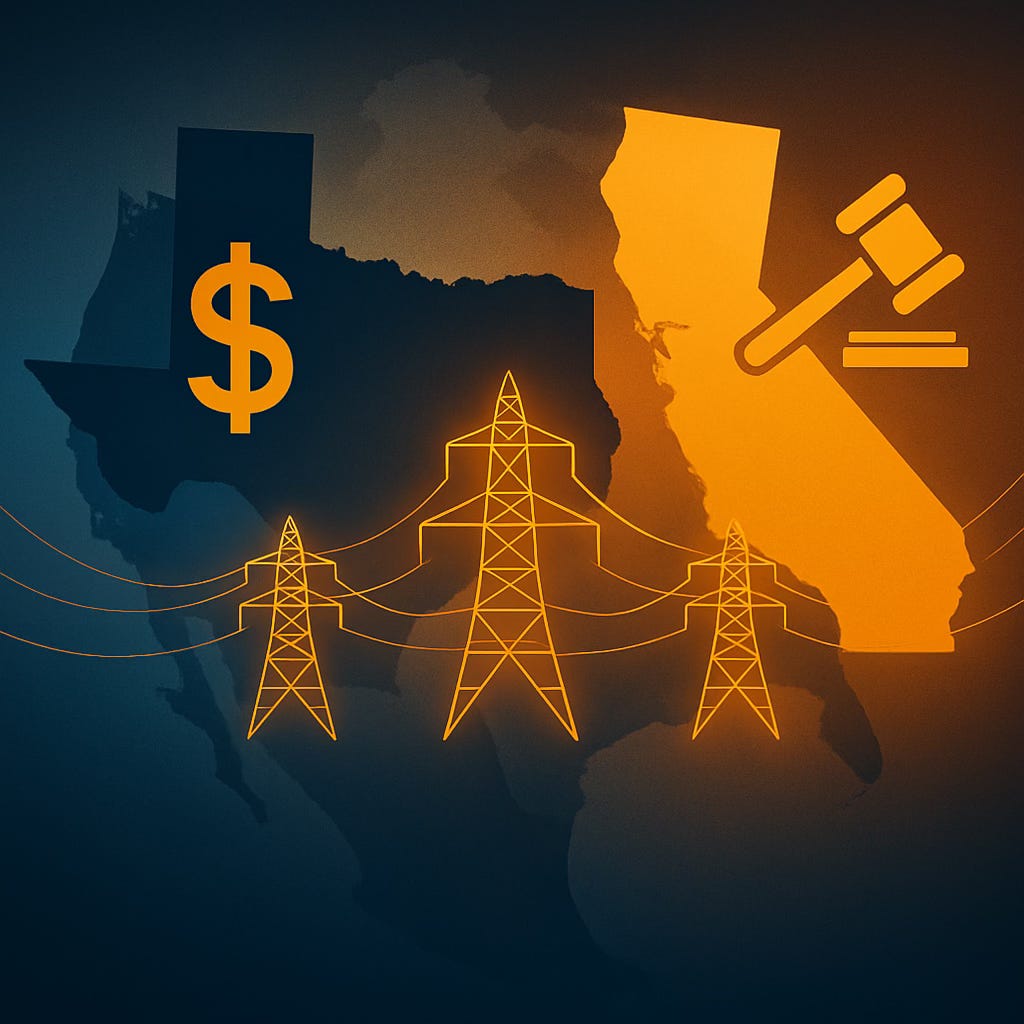
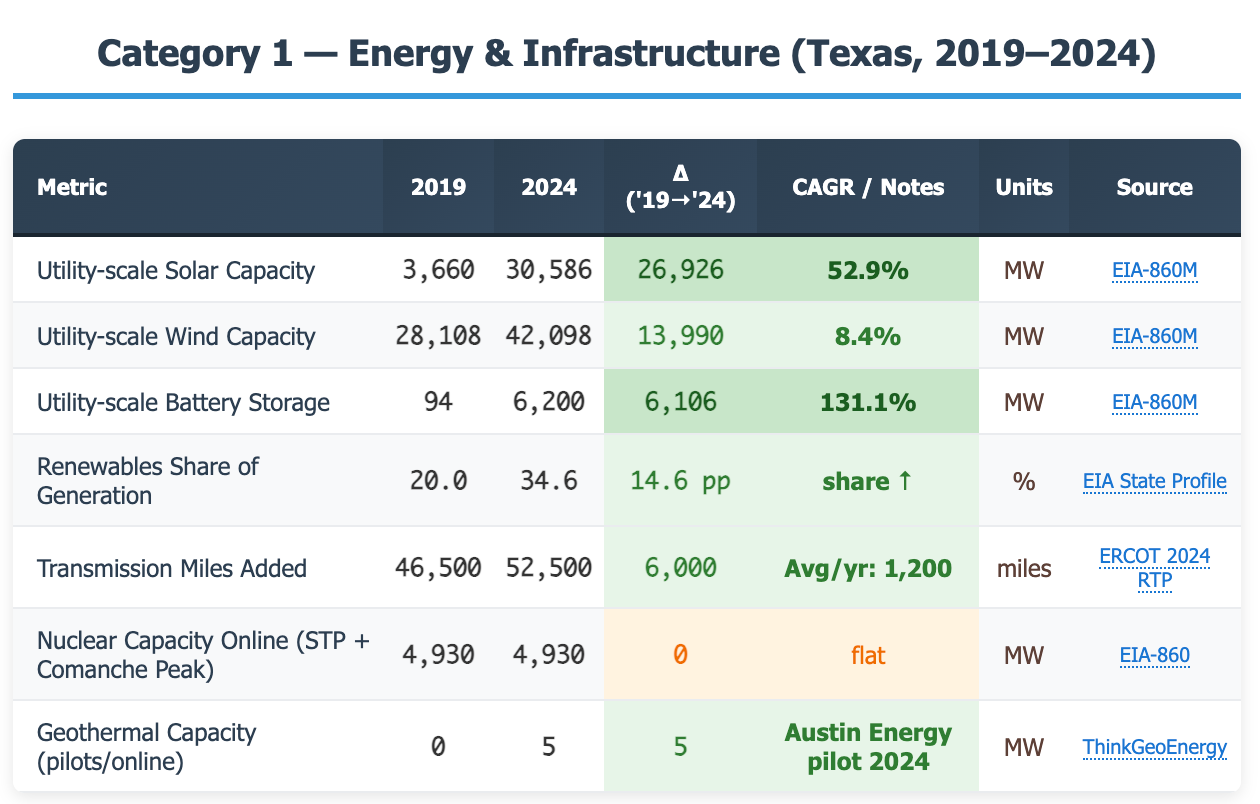
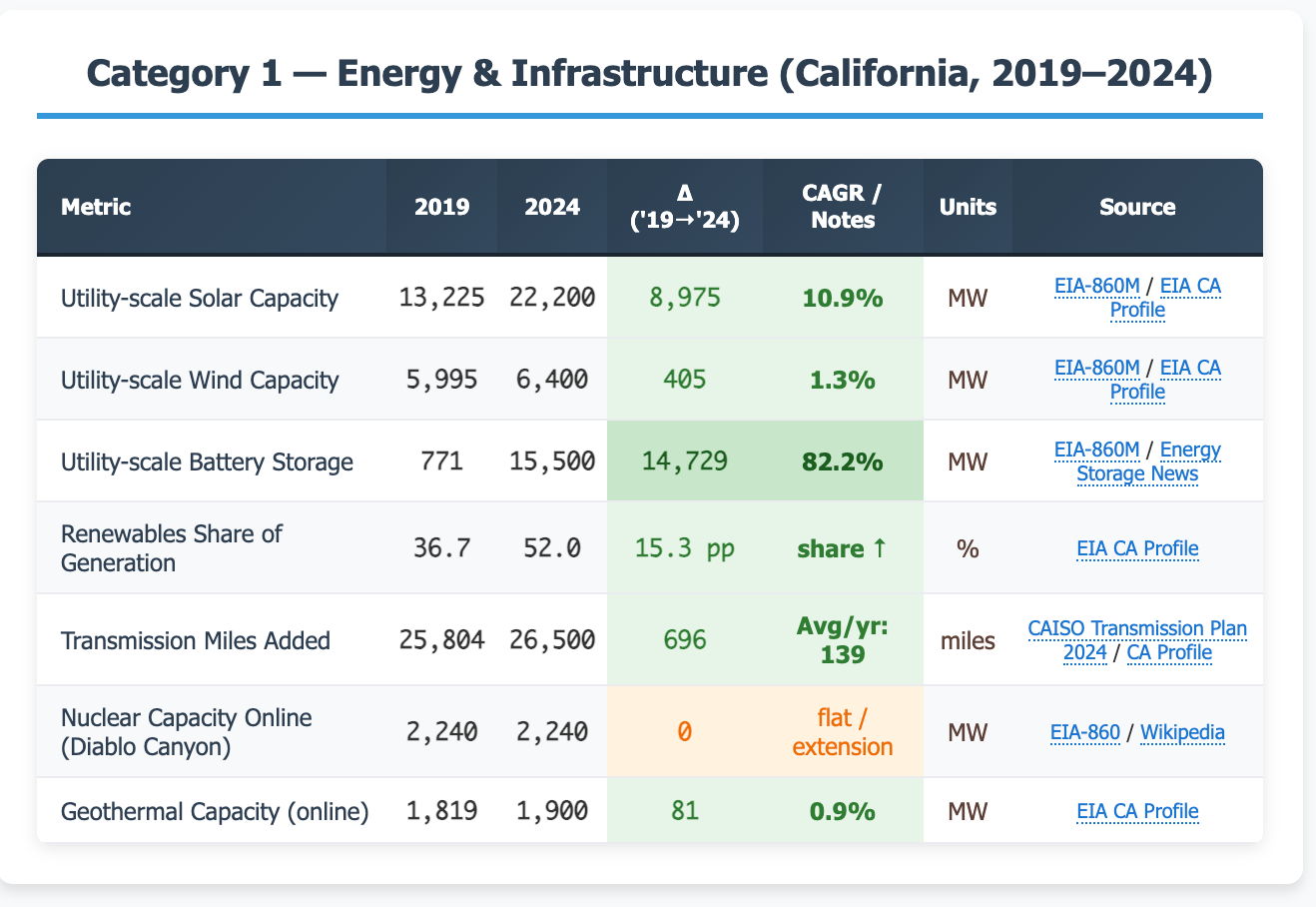
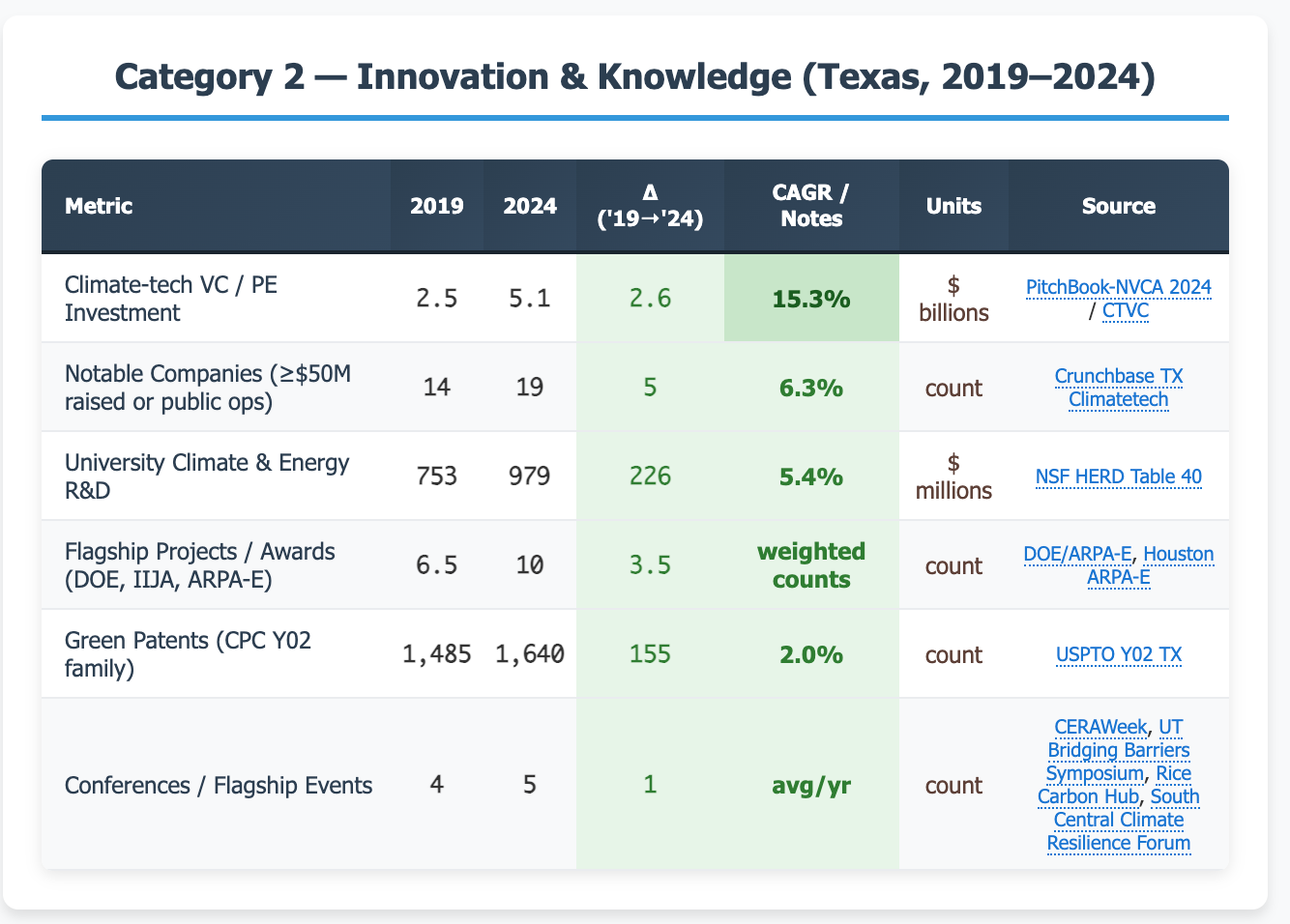
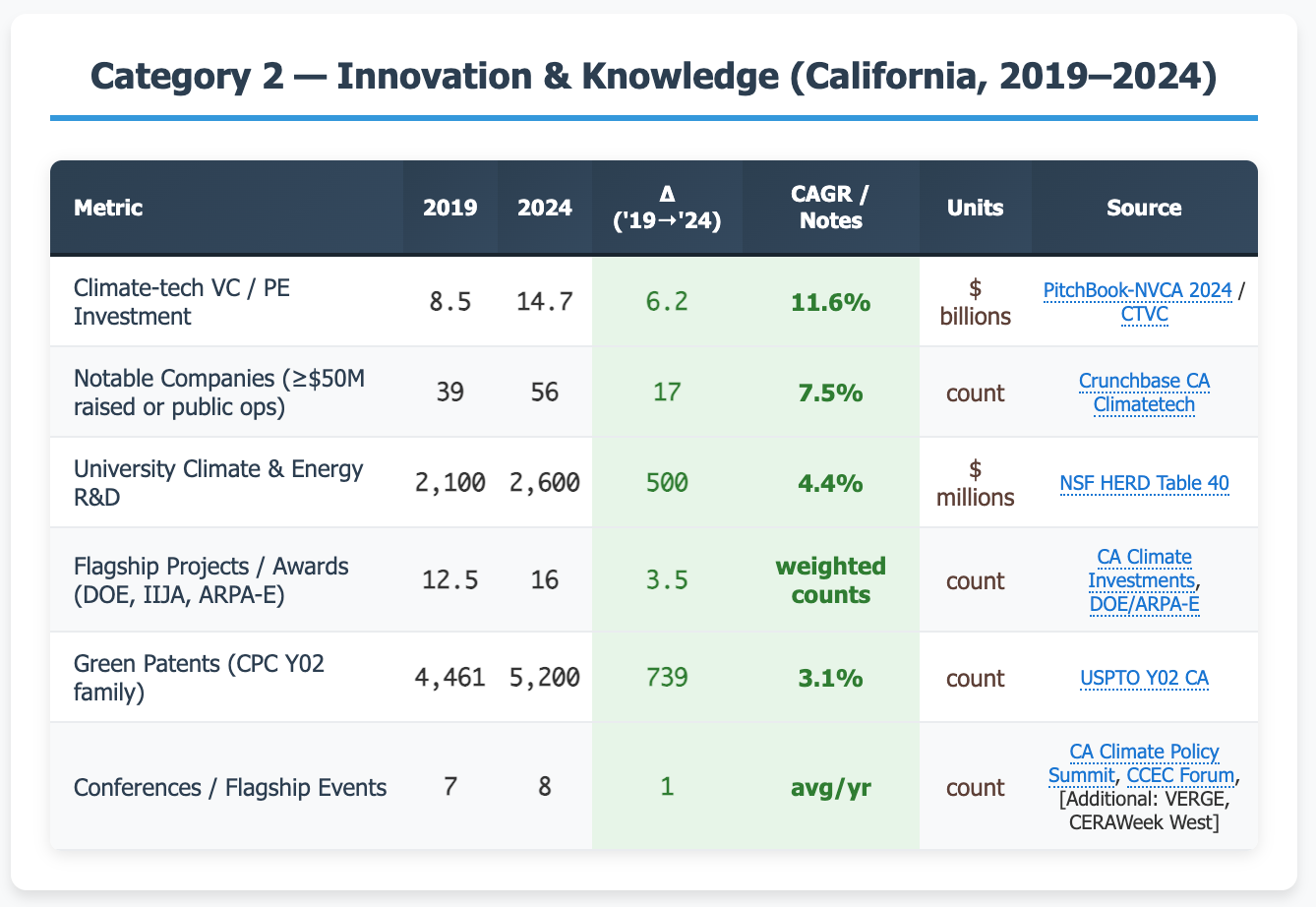
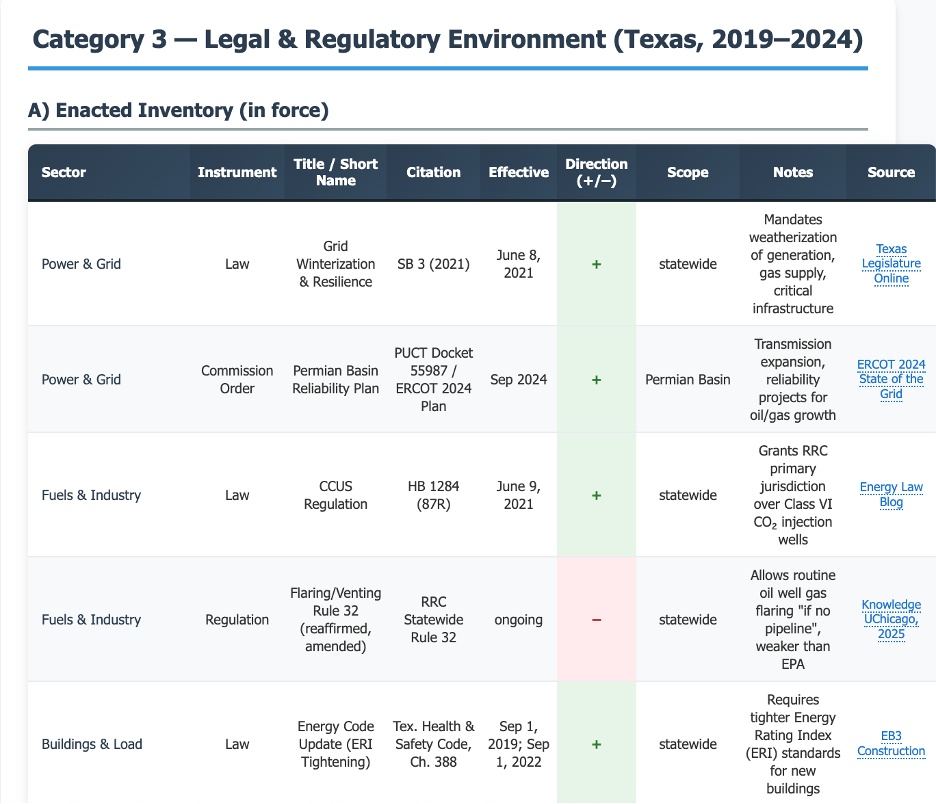
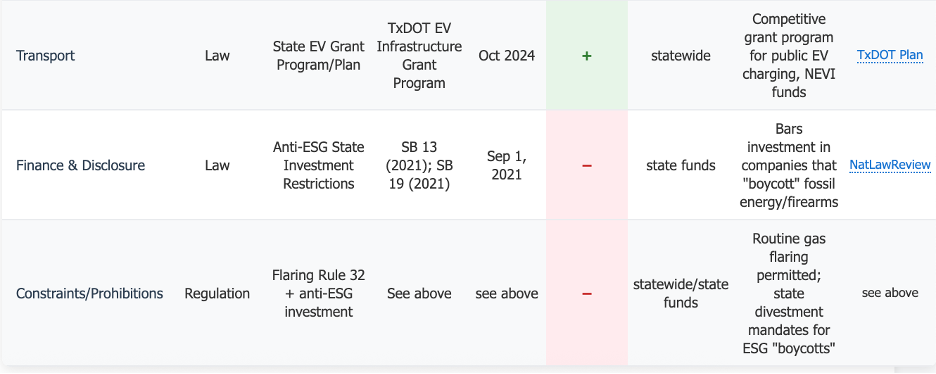
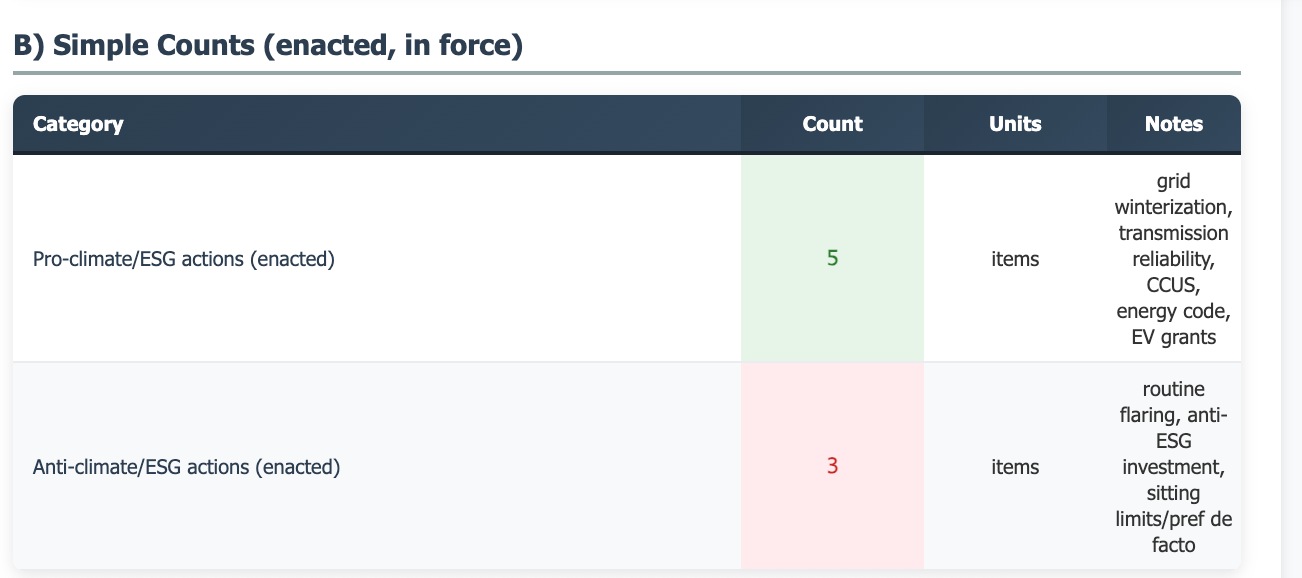
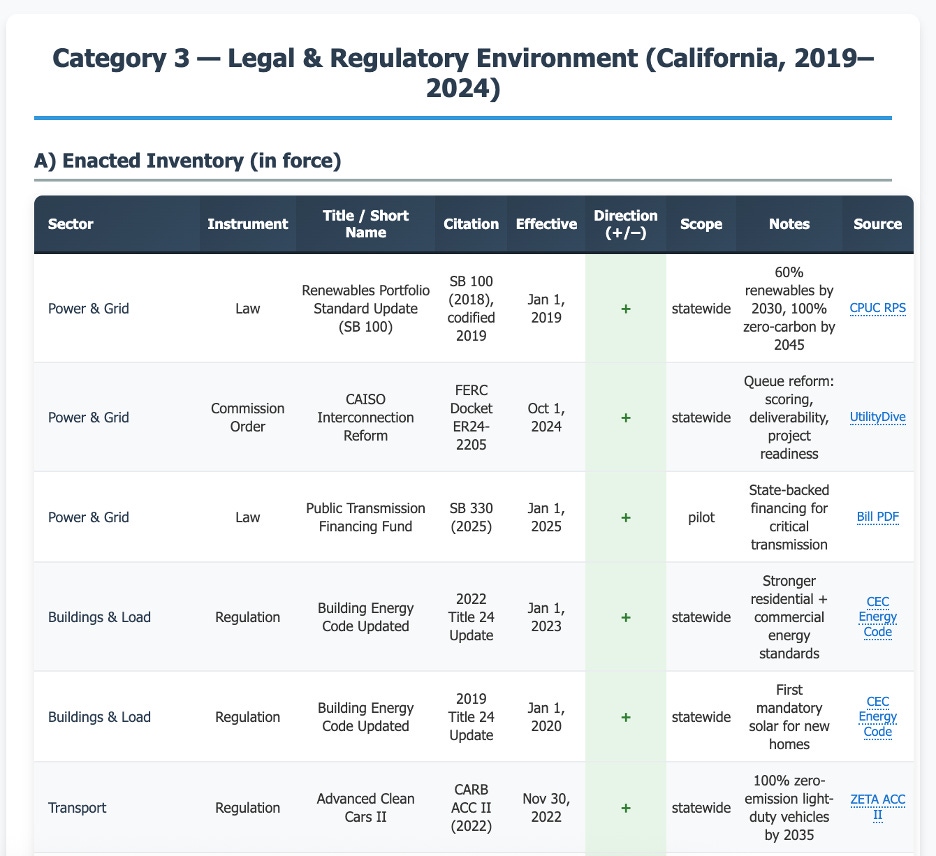
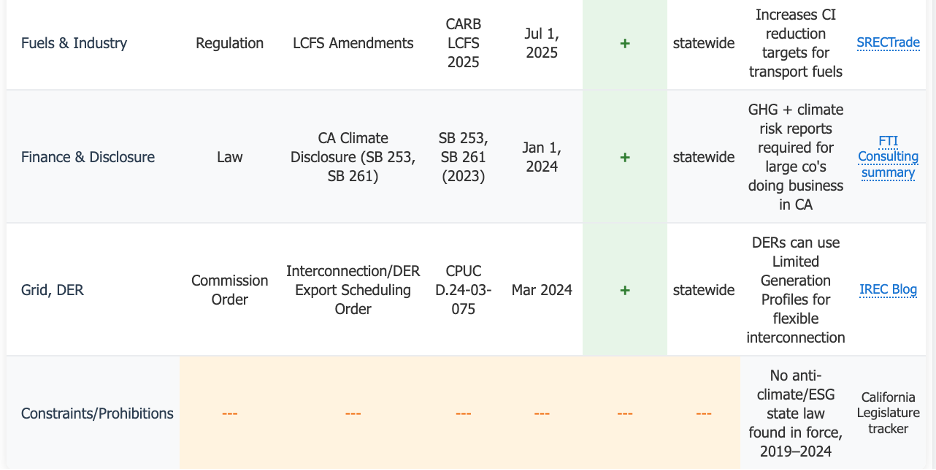
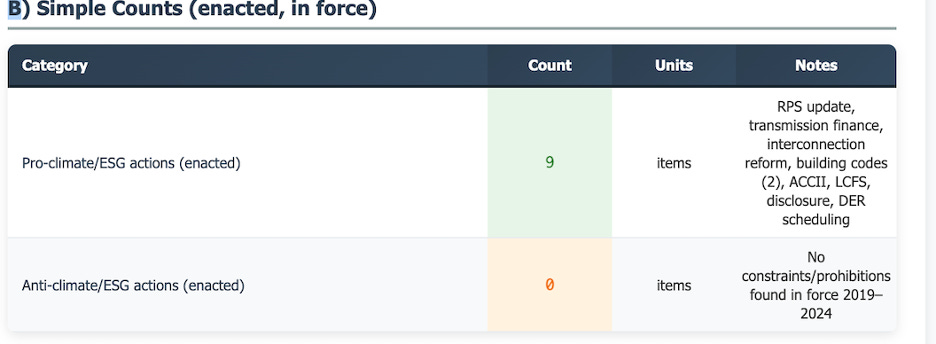
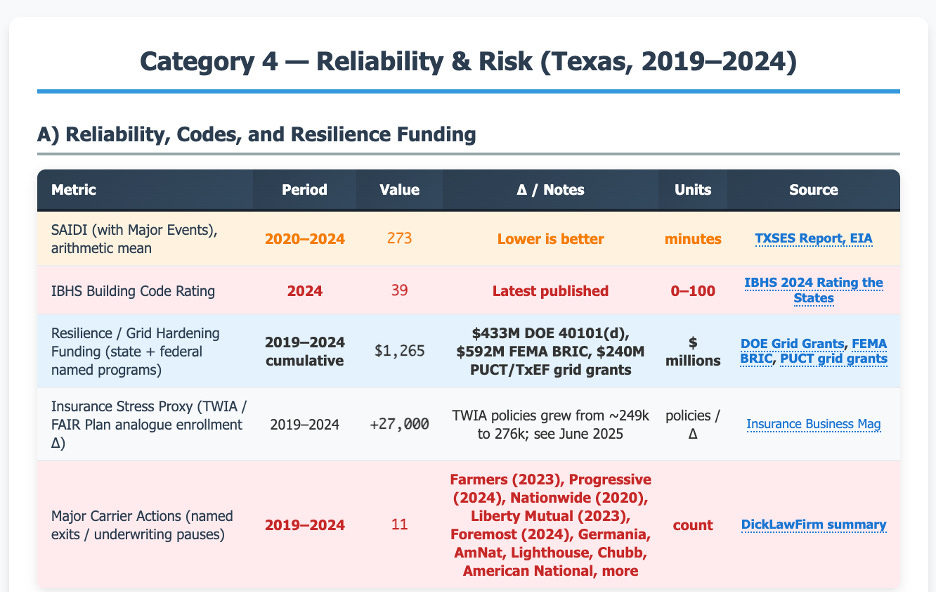
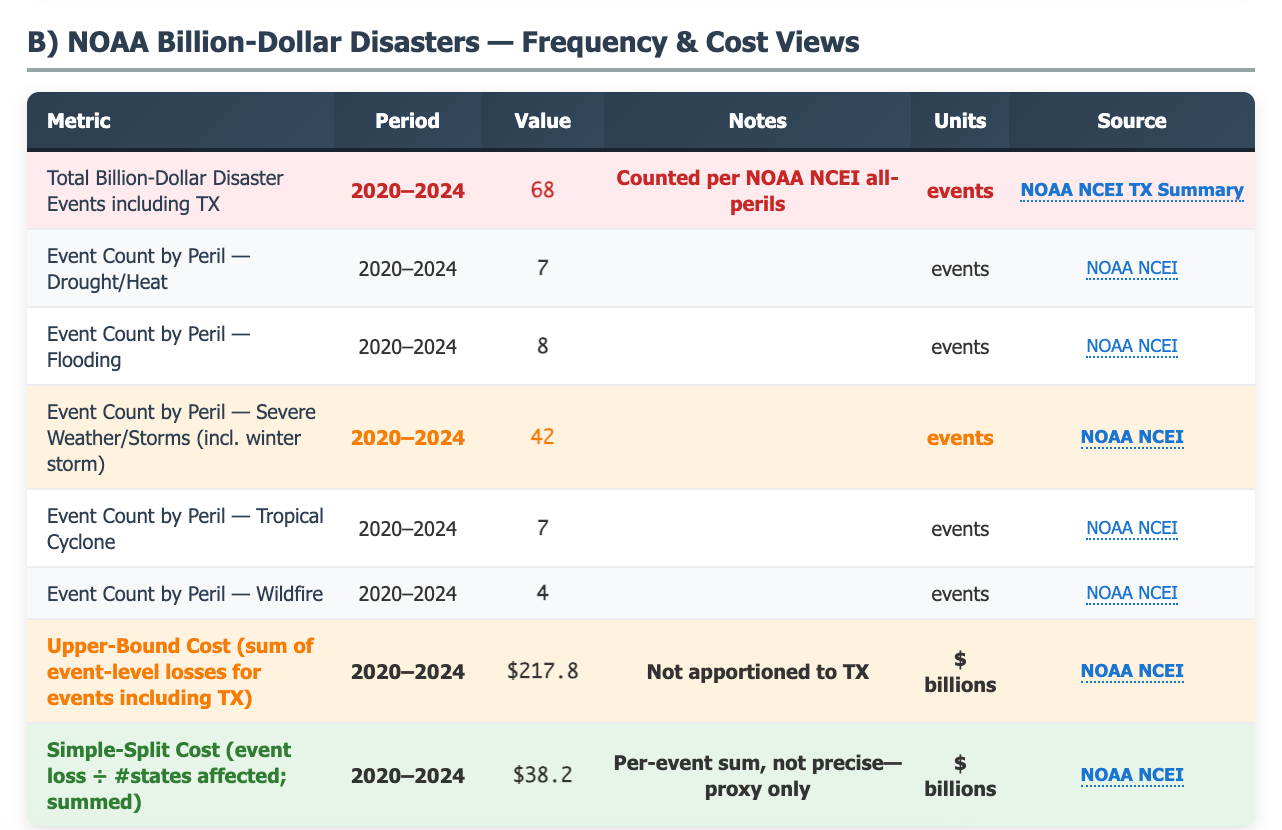
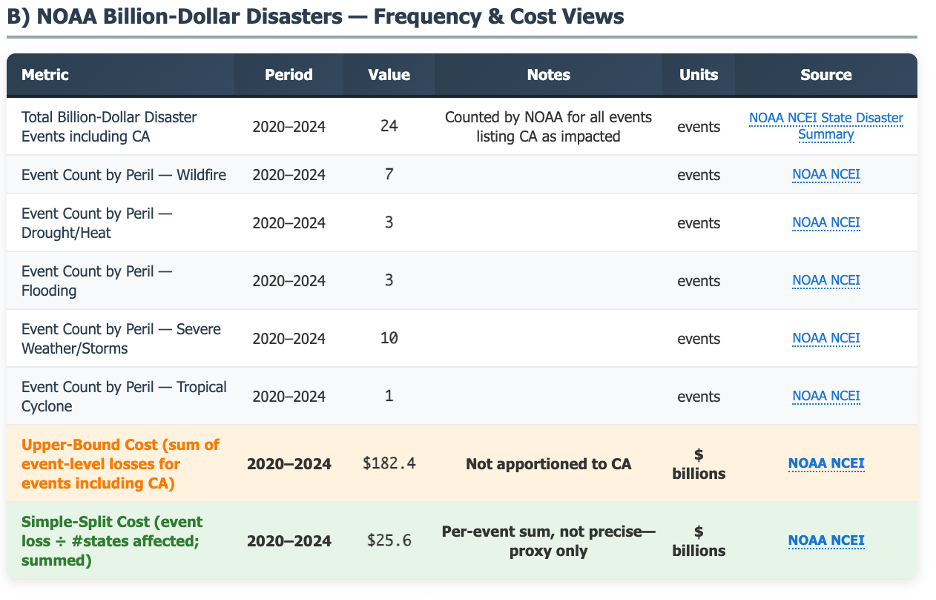
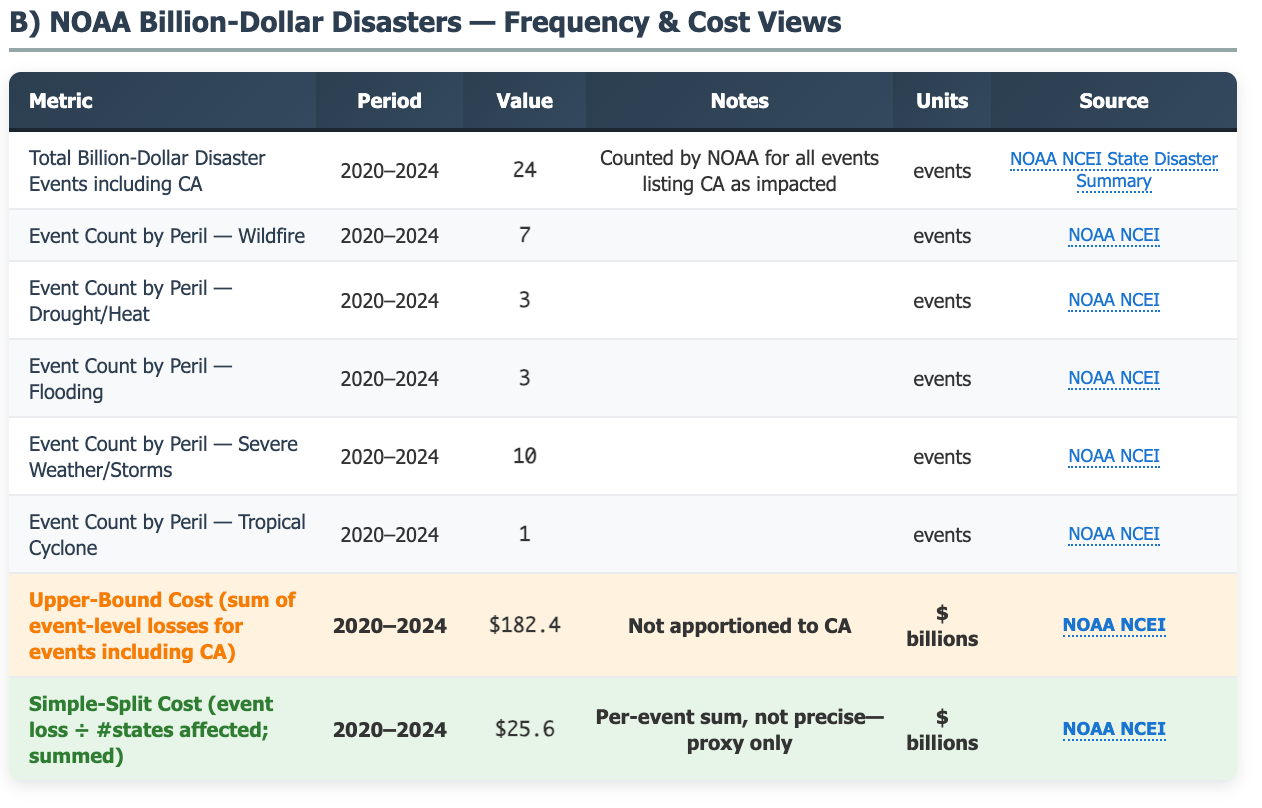
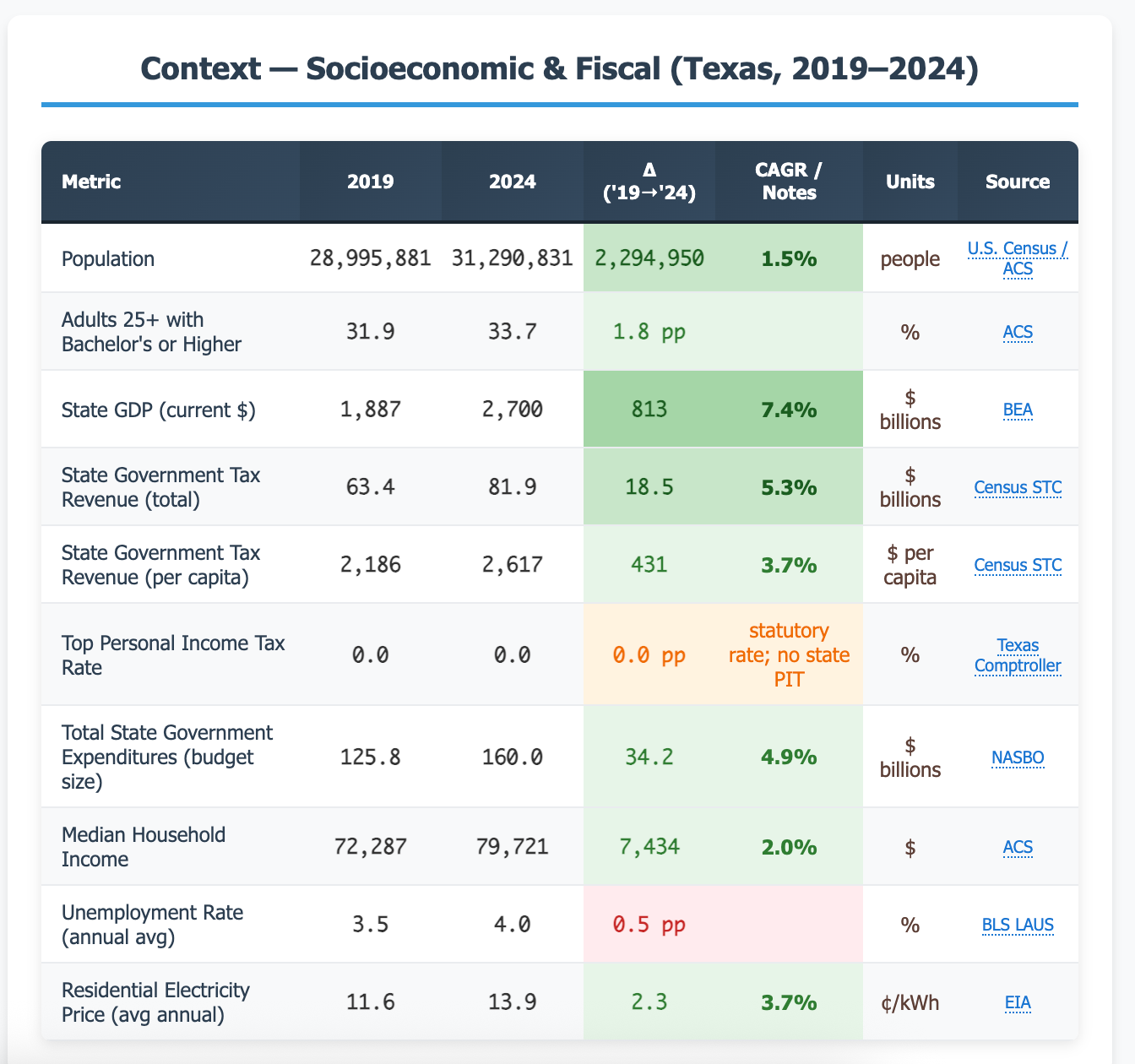
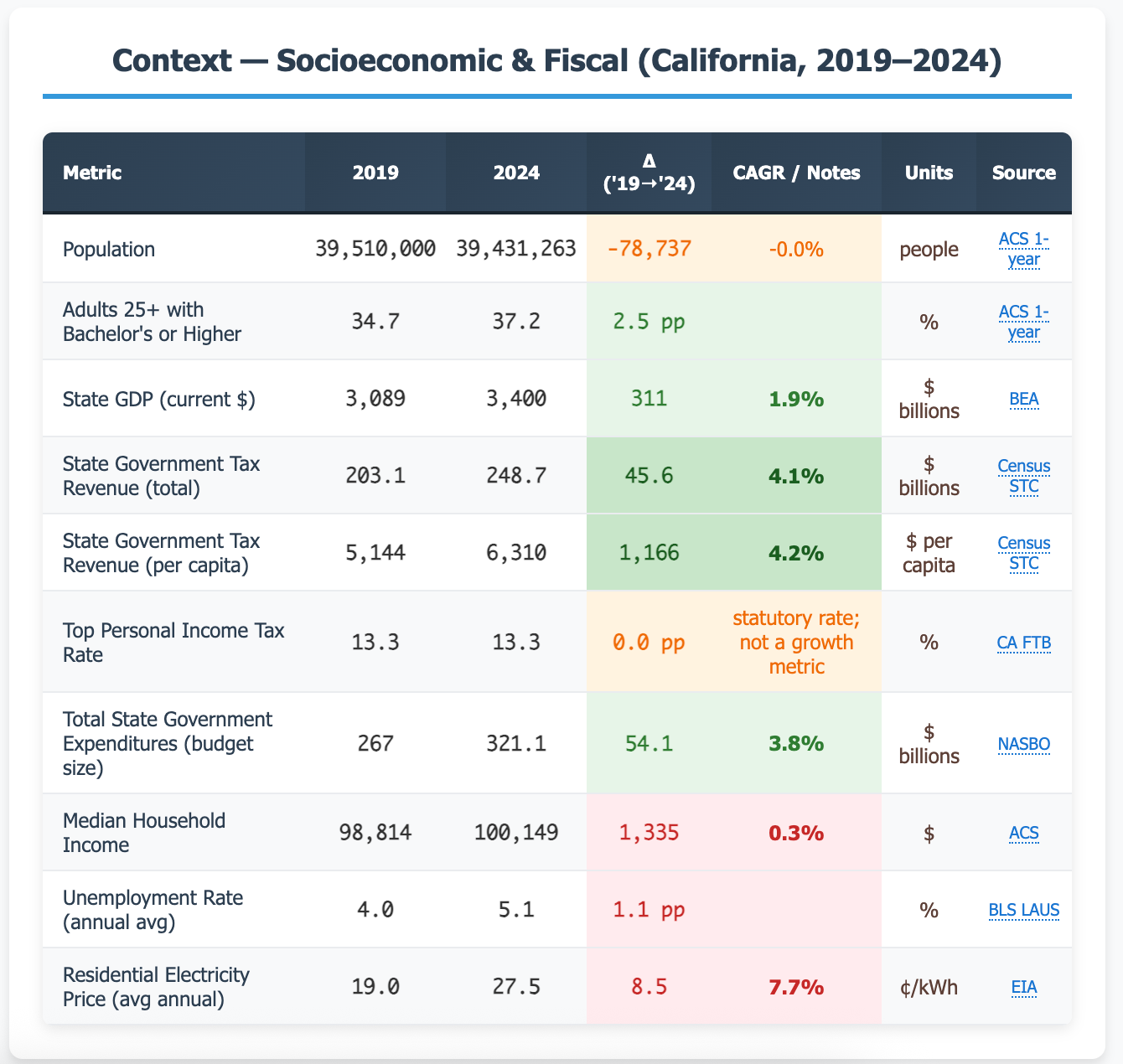
What an excellent piece of research, and compelling takeaways.
As we build S-curve narratives (S-curve is an adjecitve here...) this chapter lies at the heart of the playbook.